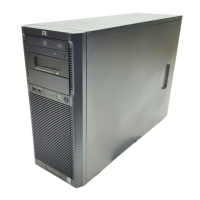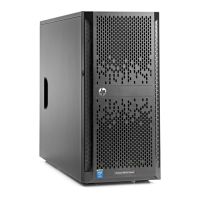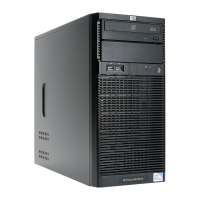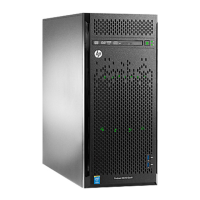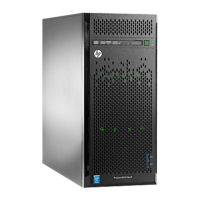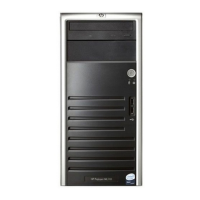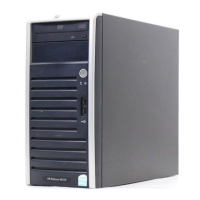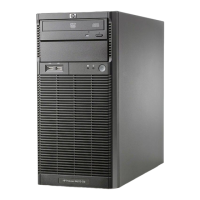Troubleshooting
Network Interface Card (Embedded or PCI) Problems
If the HP server cannot connect to the network and all the LEDs are lit on the NIC:
1. Verify that there are no resource conflicts between the NIC and any other accessory. Do
this from the system BIOS Setup Utility (pressing the Delete key on POST when
prompted).
2. Reboot the HP server and log into the NOS.
3. Be sure the latest and correct HP drivers are being used for the NIC.
4. Be sure the port on the switch or hub (or other device) has the same speed and duplex
settings as on the NIC.
CAUTION: Setting an incorrect duplex mode can degrade performance, cause data loss, or
result in lost connections.
5. Test the NIC as directed in the installation tasks for each NOS. Also check the README
files on the support driver’s disk.
6. Use the PING command to verify TCP/IP configuration.
a. Ping the IP address of the default gateway. If the PING command fails, verify that the
default gateway IP address is correct and that the gateway (router) is operational.
b. Ping the IP address of a remote host (a host that is on a different subnet). If the PING
command fails, verify that the remote host IP address is correct, that the remote host
is operational, and that all of the gateways (routers) between this computer and the
remote host are operational.
7. Directly connect two devices (with no hub, switch, or other device) using a “crossover”
cable. PING the other computer’s IP address.
NOTE: The PING command uses Internet Control Message Protocol (ICMP) Echo Request and Echo
Reply messages. Packet filtering policies on routers, firewalls, or other types of security gateways might
prevent the forwarding of this traffic.
LEDs Are Not Lit on the NIC
No lit LEDs probably indicates a bad network cable, hub connection, or other network error.
1. Be sure that the cabling is installed correctly:
a. Try another known good network cable.
b. Try another network connection (another hub, switch, etc.).
c. Connect the NIC to a known good network connection.
HP ProLiant ML150 Server Operations and Maintenance Guide 4-23
HP CONFIDENTIAL Codename: Stone Soup Part Number: 343329-001 Last Saved On: 8/14/03 10:25 AM
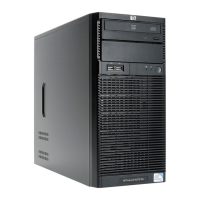
